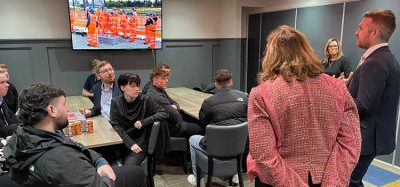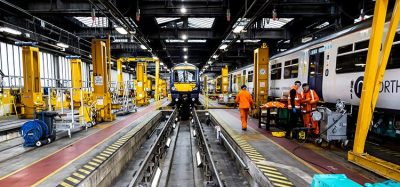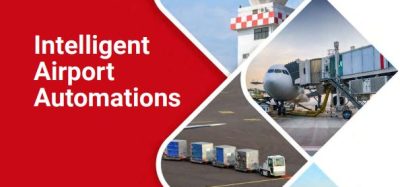Unlocking rail operations with integrated resource management
Posted: 31 August 2021 | Alexandre Savard | No comments yet
Alexandre Savard, Director of Business Development for Rail at GIRO, discusses how integrated resource management supported by software technology is unlocking rail operations.
Why do rail operators need to ‘reinvent’ their planning and operating procedures?
More than ever, we see a growing need for service, maintenance, and workforce planning to become more dynamic and flexible. The COVID-19 pandemic has accelerated an existing trend in passenger rail and public transport towards more volatile passenger demand. Rail operators must cope with this reality by being more flexible and efficient than ever.
A key challenge for operators is ensuring that service planning and adjustments are better synchronised with fluctuations in passenger demand, while taking into account the many constraints of rail operations.
A key challenge for operators is ensuring that service planning and adjustments are better synchronised with fluctuations in passenger demand, while taking into account the many constraints of rail operations. For instance, predictive maintenance reduces the overall rolling stock lifecycle costs, but adds complexity to the planning and operations processes. Another example of railways benefitting from more flexibility is how considering employee preferences in assigning work, in combination with techniques for predicting absences, brings increased employee satisfaction, as well as making workforce planning more robust.
In planning and operations, technology is key to providing the input to support decision‑making, as well as new planning and operating practices. On the operations side, greater agility will be required, with real-time interfaces enabling quicker reactions to unexpected events.
Software is key in helping rail operators make the best use of this new, dynamic flow of information in a timely fashion to optimise and automate operations. Integrated solutions are also helping communicate new plans and service adjustments efficiently to on-board personnel and station staff to ensure flawless execution. Making passenger information about service adjustments available almost in real time is another advantage brought by the use of integrated technology.
Do you think some rail operators still struggle with breaking down silos when it comes to integrated resource management?
Historically, most operators have managed rolling stock and workforce in separate clusters. Planning for the long-term, short-term and day of operation has also been carried out by different teams. Breaking down these silos and modernising resource‑management processes can seem daunting, but the right tools make it much easier to achieve these goals.
For users to interact more easily across functions, it is important for the architecture and ergonomics of the planning and operations-management software to facilitate interaction and synchronisation across roles.
Some operators have moved to implement transversal roles that plan and manage both rolling stock and staff. However, they are not always supported by software that fosters integrated resource management. For users to interact more easily across functions, it is important for the architecture and ergonomics of the planning and operations-management software to facilitate interaction and synchronisation across roles.
This is the approach that we have taken with our HASTUS software; making it possible to create, optimise and manage the timetables, infrastructure access, rolling stock and workforce in the same environment. For example, in a crew schedule, the user can also view and modify the rolling stock schedule. They can also access planned schedules and operating schedules at any time, with the option of comparing the two using KPIs for such things as cost and resource impacts. They can then use this information when planning new schedules.
Is the HASTUS solution flexible?
Our vision is to support rail operators from around the world in planning and operating more flexible and efficient service, with the help of integrated software solutions, optimisation strategies and modern technologies.
HASTUS can respond to complex requirements and constraints of rail operations. Just a few examples of the many possibilities include passenger demand, government guidelines for headways, service spans etc., and service adjustments for trackwork or special events such as closing network segments, speed limits, or revising service levels. It can also be used for planning rolling stock rotation to meet cyclical maintenance requirements, servicing guidelines (for instance cleaning frequency) and employee qualifications (such as ensuring that there are the right number of train drivers who are familiar with certain types of train or are qualified to drive in certain rail corridors.)
Employee preferences, such as AM/PM, job sharing, a four‑day work week, etc., can be considered in building rosters and assigning work.
What do you see as being the next exciting step in developing your software?
GIRO is committed to the rail industry through R&D and evolution of the HASTUS software. Our vision is to support rail operators from around the world in planning and operating more flexible and efficient service, with the help of integrated software solutions, optimisation strategies and modern technologies.
We are also excited about the contribution that advanced planning and management software is making to the global effort to reduce our carbon footprint, and we are convinced that it will be instrumental in making mobility more resilient and sustainable.


Issue
Related topics
Technology & Software, The Workforce, Timetabling/Scheduling







